A tour of the Netherlands
I visited the Netherlands between 2023-12-14 and 2023-12-17, which was my first overseas trip from the UK without flying.
I personally don’t like flying on airlines compared to other forms of public transport, mainly because it is a hassle to go to airports which are usually far away from the city centre, the strict airline security, the limited ability to carry luggage, and the need to book early as there is a strict limit on how many people a plane can carry. Unfortunately, the UK is an island country, therefore due to its very nature, flying is usually the only realistic option to go overseas apart from a limited set of destinations connected by tunnels and ferries, which include France, Belgium and the Netherlands. I normally don’t have a particular interest in visiting these countries, however I have read that the Netherlands has its national railway network operated like a giant commuter rail network, with PAYG ticketing across the whole country, distance-based pricing and a turn-up-and-go frequency on the intercity trains, without all the nonsense in Great Britain, therefore I want to have a visit to experience how is it like to travel on a “national metro”.
However, only the above isn’t enough motivation for me to travel, considering that the Eurostar has compulsory reservations like an airline (if it is possible to travel walk up without a reservation like London – Edinburgh, it is more likely that I will otherwise do the trip). The other reason is that I want to do winter swimming races, with a goal to get into the Hong Kong team in 2025, so I need to build up my experience. Unfortunately the IISA GB Championships was full already before I started training and making up my race plan, and on the IISA calendar, there are no other races in the UK and the closest overseas pool race is Amsterdam Ice Swim, where I can travel there without flying.
Normally I don’t want to travel long distances to do sports, unless I am already at the national level and aiming for international ranking, as in the case of doing trail orienteering, but two reasons combined give me enough motivation to actually have the trip, and I checked ticket prices of Eurostar. I was quoted £39 + £54 for a round trip between London and Rotterdam departing 14 December (Thursday) morning and returning 17 December (Sunday) evening two months before travel, thought it was a good price so I made the booking.
Then I needed to decide which races to do. The programme included 50, 100, 250, 500, 1000 metres freestyle, 100 metres breaststroke, and 4×250 and 4×50 metres relay races. Of course as I was new to winter swim racing, 1000 m was out of consideration. 500 m was also probably too much for a newcomer as well. People advised me to start with 100 m however as I am a long distance endurance swimmer, 100 m was like a sprint for me and I wasn’t built to have such explosive power for a short distance, and my target this season was to get a time for a 250 m race, and possibly 500 m as well such that I can build to 1000 m in the next season. I eventually signed up for both 100 m and 250 m races, hoping that as the race was in the early season, I might have a chance to progress to 500 m later if a race opportunity nearby turned up.
The 250 m race was on Saturday afternoon and the 100 m race was on Sunday morning, therefore my planned route was to visit Rotterdam – The Hague – Amsterdam in order.
Day 0 (14 December)
The Eurostar experience
The Eurostar train I booked departed at 06:16 (UTC+0). Eurostar is a cross-border train service with security required for the Channel Tunnel, therefore check-in is required before departure. Since Brexit the recommended check in time has been 60-90 minutes before departure but the hard limit has remained as 30 minutes, while the official minimum connection time for ticketing purposes is 35 minutes. After the pandemic restrictions were lifted, it was generally considered by travellers that arriving 60-90 minutes early was not necessary, and 45-60 minutes was a good time to aim, so I aimed to arrive at the station at 05:30. However I departed home 10 minutes later than planned so I arrived at the station at 05:38, with just a few minutes to spare before the hard deadline.
I expected that there wouldn’t be too many people so early in the morning but it was not true. However, the entrance queue was sorted by departure time with the queue for the Amsterdam service having just a few people left, so I didn’t have to wait for long to pass the security.
After passing the security, there was a UK exit check. As the UK doesn’t have exit border controls, it was just to scan the passport to register the exit from the UK, while on airlines the information is supplied through the airline during the check in process. Afterwards, it was the border control to enter France. Juxtaposed border controls are used on Eurostar, meaning that the border officials of the destination country are authorised to carry out checks outside their own country for the purpose of clearance into the country, without a transfer of sovereignty, in this case, I am cleared to enter the Schengen area while still under the jurisdiction of the UK. This is unlike the high speed rail between Hong Kong and mainland China, where the Mainland Port Area and passenger trains in operation are leased to the mainland, not under Hong Kong’s jurisdiction, despite being physically on Hong Kong land.
As I passed the French border control, the train to Amsterdam was ready for boarding. International trains use a set of secured platforms in London St Pancras, separated from the domestic high speed trains which run on the same route to Kent. It seemed that passengers for the 07:02 train to Paris were already getting into the station well before 06:00, that’s why the station wasn’t quiet despite being so early in the morning.
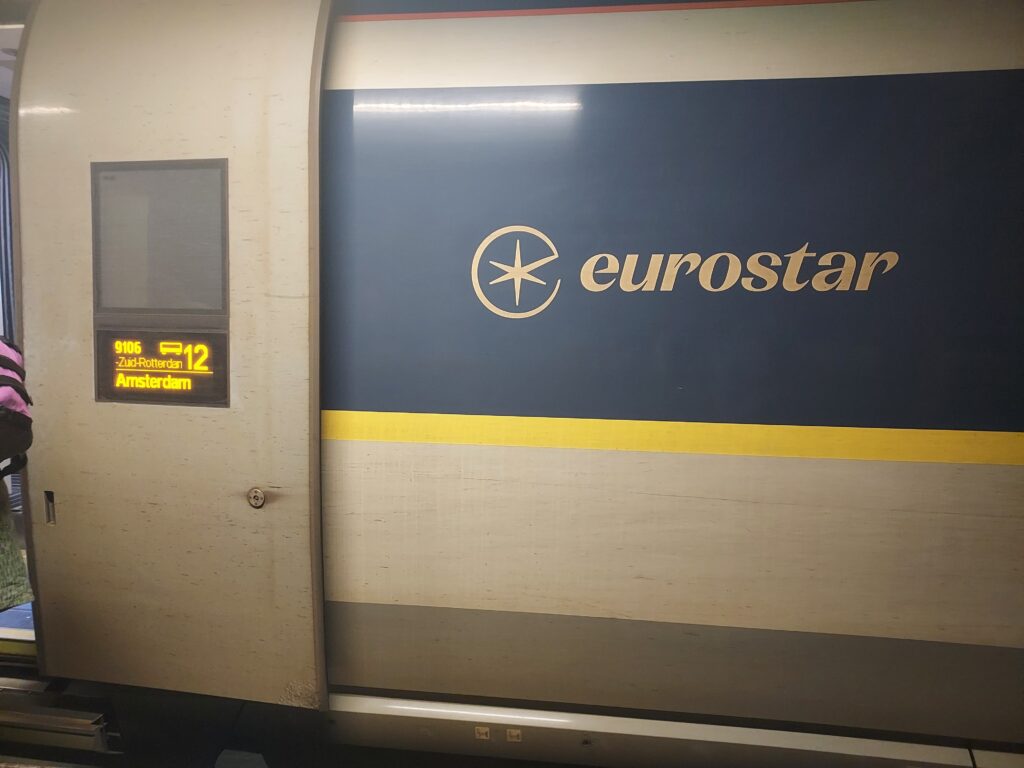
The train departed on time. Since the pandemic, Eurostar has refused to serve the two stations in Kent with all trains running non-stop between London and the Eurotunnel. The train passed Ashford 25 minutes after departure (06:41), and after a further 8 minutes (06:49), it entered the Eurotunnel. This was my first time crossing the Channel by travelling under it, having previously flown over it and swam across it, and it was a magical experience to go underground on an island and pop out on a continent separated by the 33 km wide Channel, a barrier which takes hours to cross even on a ferry, in just 21 minutes (08:10 UTC+1).
As it was near midwinter, it was still completely dark, and I could see nothing of the French landscape on the way through France, and only when I reached Belgium the day came.
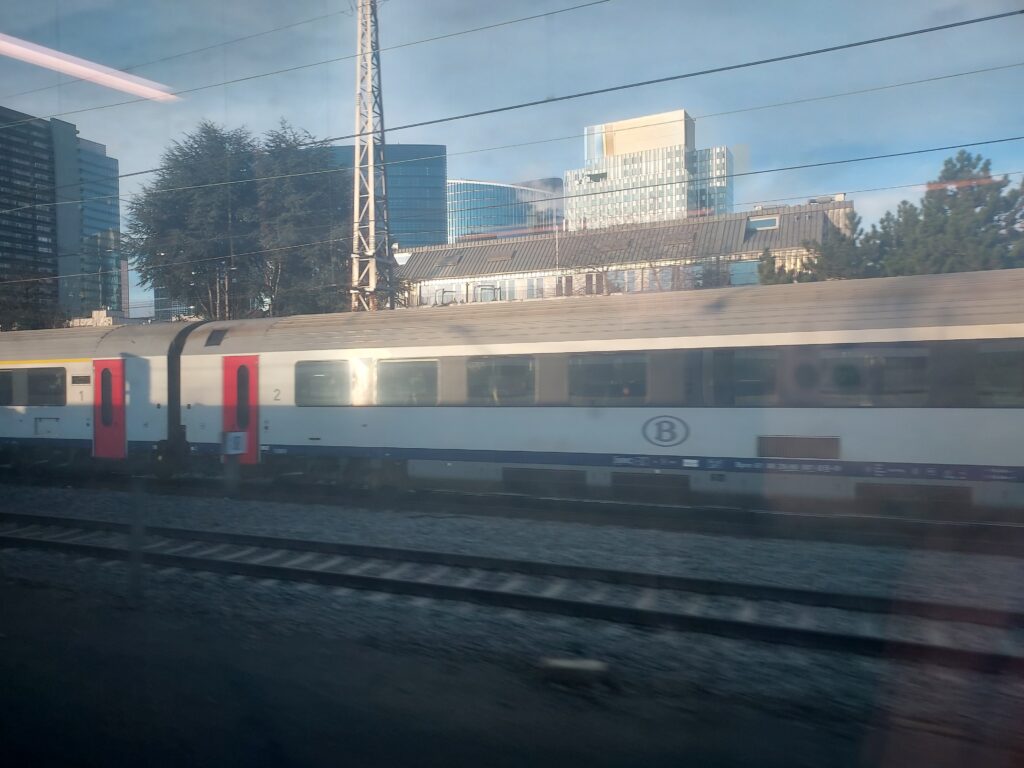
There was a problem when the train was at Brussels causing a small delay arriving Rotterdam. I was free to go without any further checks at Rotterdam, like alighting a domestic train. As I had my breakfast at home early in the morning, I was already hungry and wanted to find lunch. I exited the station and walked to Chinatown but none of the restaurants were open, with all starting businesses at 12. I ended up having some crap fast food instead.
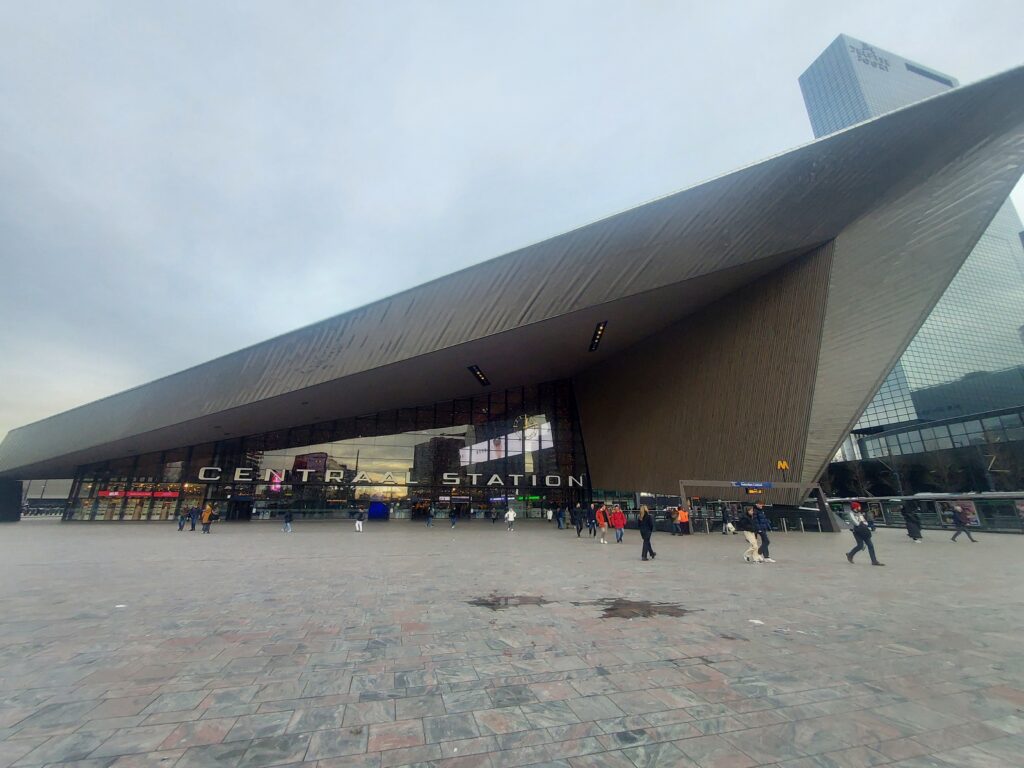
The Railway Museum
I originally didn’t plan to go to the Railway Museum as it is out of the route of Rotterdam – The Hague – Amsterdam, but after posting my plan on a forum, I got multiple replies persuading me to visit the museum so I rearranged my plan to go there, and decided not to go to Hoek van Holland. Therefore I got back to the station, took an Intercity train to Utrecht and a bus to go to the museum.
It turned out that the visit was worthwhile. There is a signal box on display which can still be used to move trains inside the museum. I also saw for the first time a real rail turntable as well. In particular, there was an exhibition on how the railway was used for persecution when the Netherlands was under Nazi occupation during World War II.
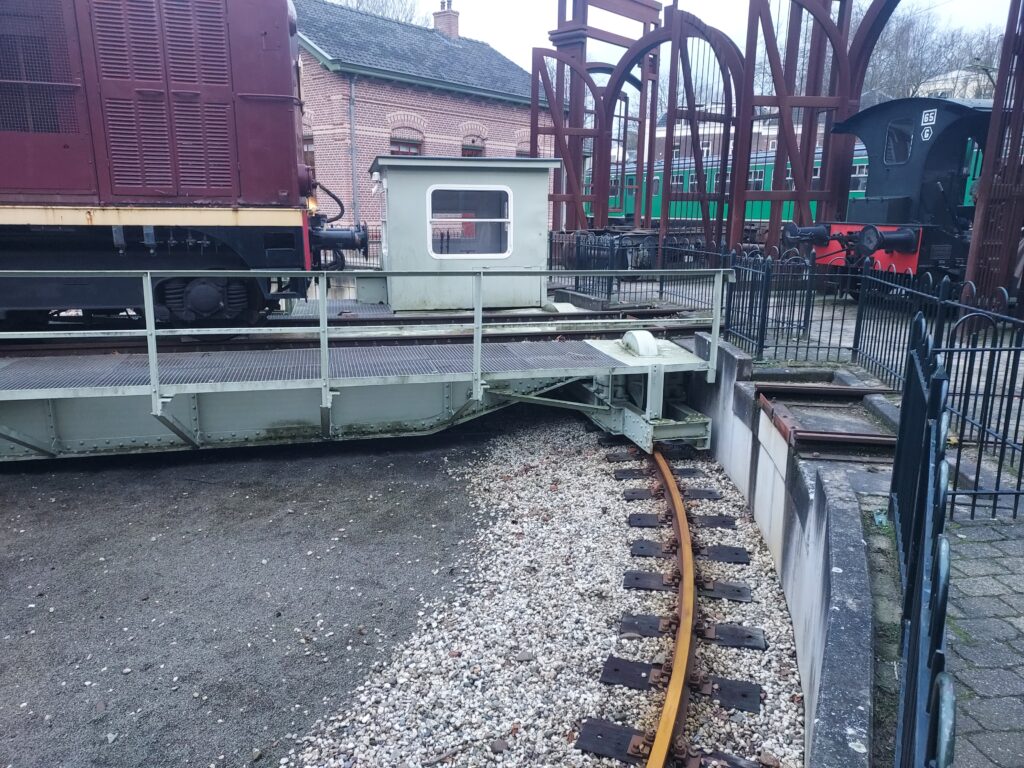
There is a train station exclusively for the museum, Utrecht Maliebaan, where a shuttle train operates hourly when the museum is open. The shuttle train is part of the NS network which means a through ticket to any station on the national network can be bought and used, or you can tap in at the museum, travel to anywhere in the country by train, and tap out for a single fare to be charged. I gave it a try after visiting the museum, however I won’t recommend it after trying it, because the route of the shuttle train is a huge V-shape with a reversal during the journey, with a route distance of 7.9 km for a straight-line distance of 1.5 km, unless you are disabled or otherwise want the convenience compared to using the bus from Utrecht which runs on a more direct route but not right to the entrance of the museum, requiring a walk outside.

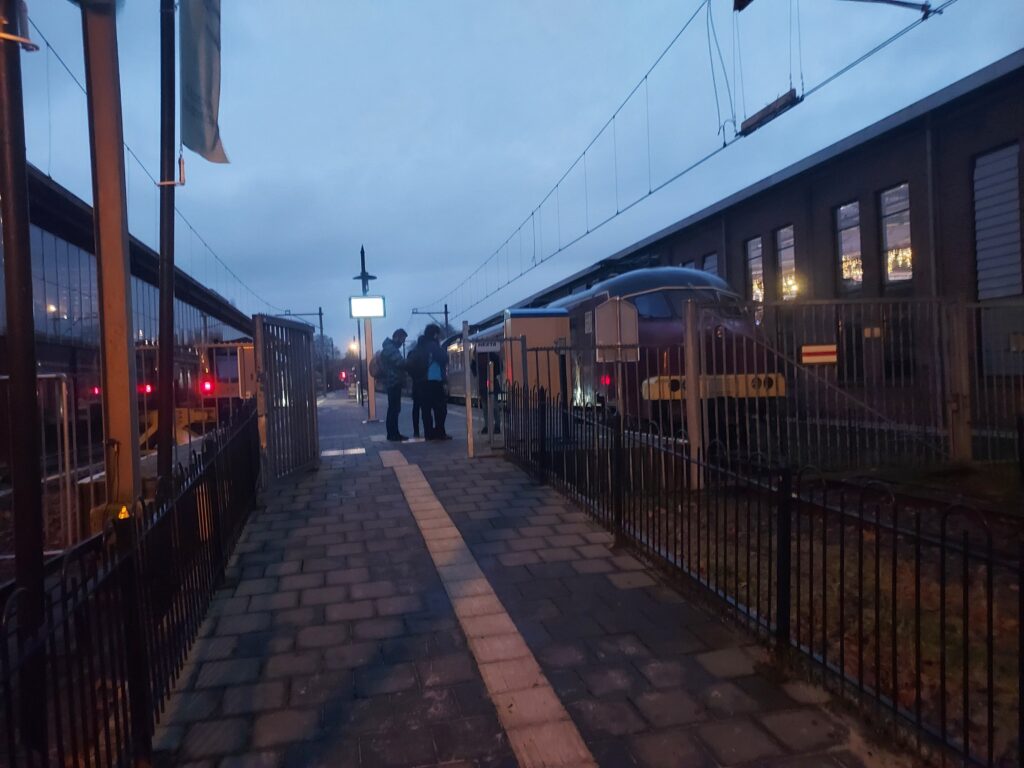
Rotterdam
The hostel I stayed at was in a cube near Blaak station. I checked in then went to Markthal to look for dinner. There was a 39€ / person Japanese buffet but it refused to serve me until the next hour because it was full, and I ended up going to Chinatown for Chinese food.
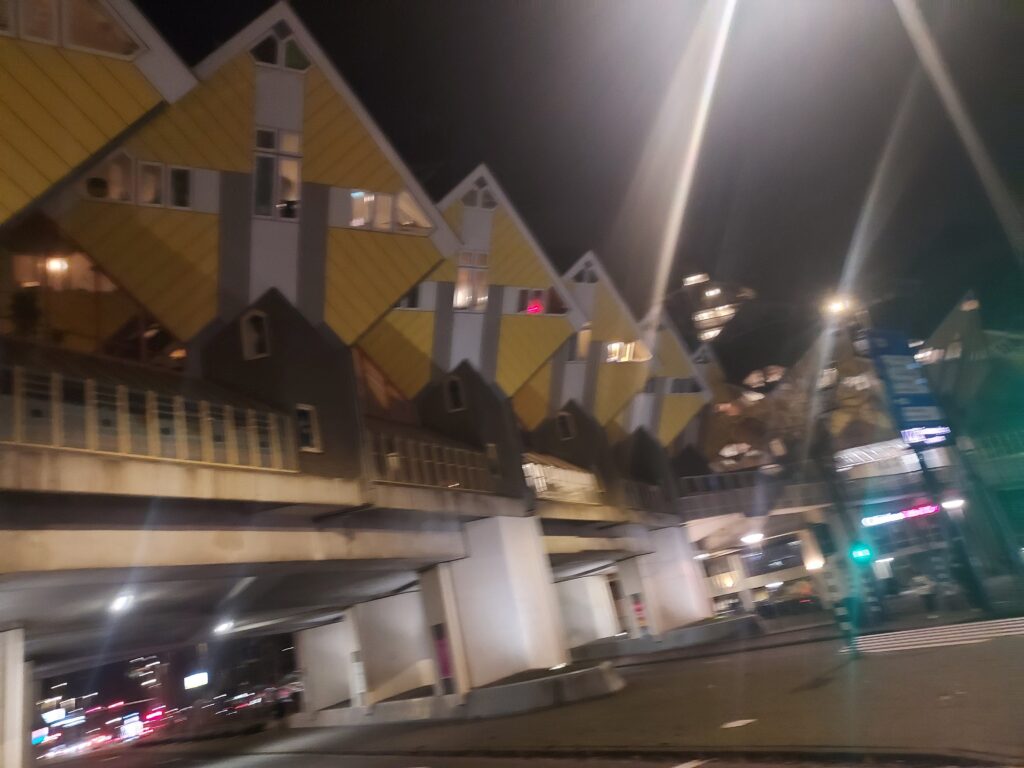

After dinner I went for a walk in Zuiderpark, then across Erasmus Bridge.
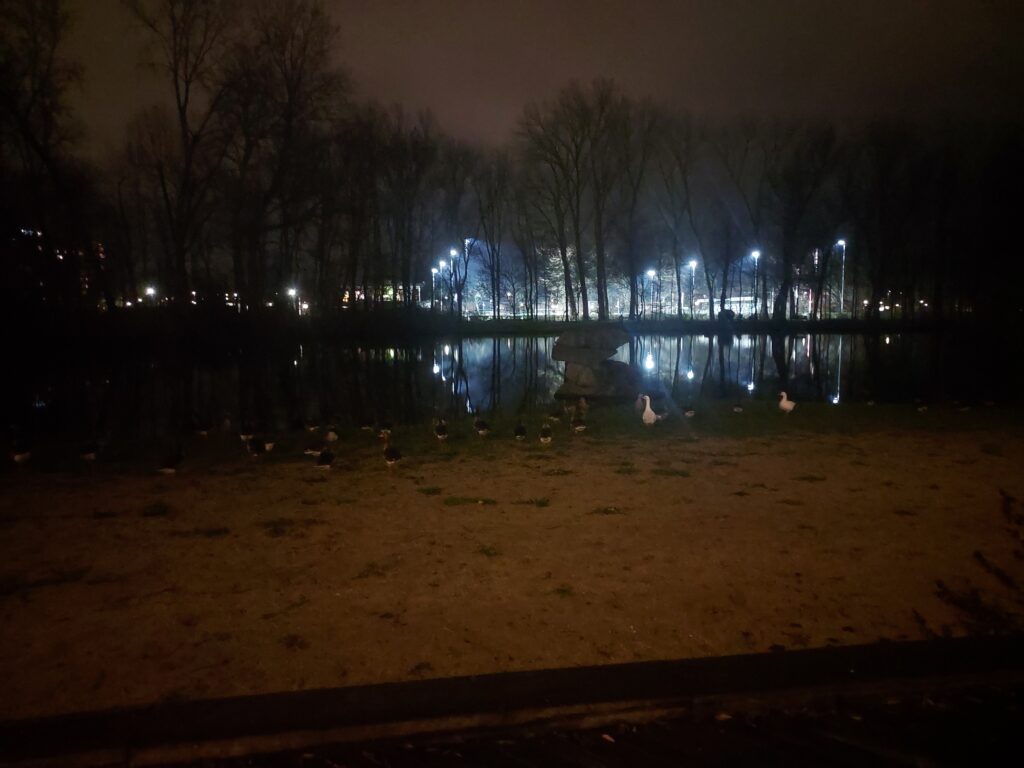
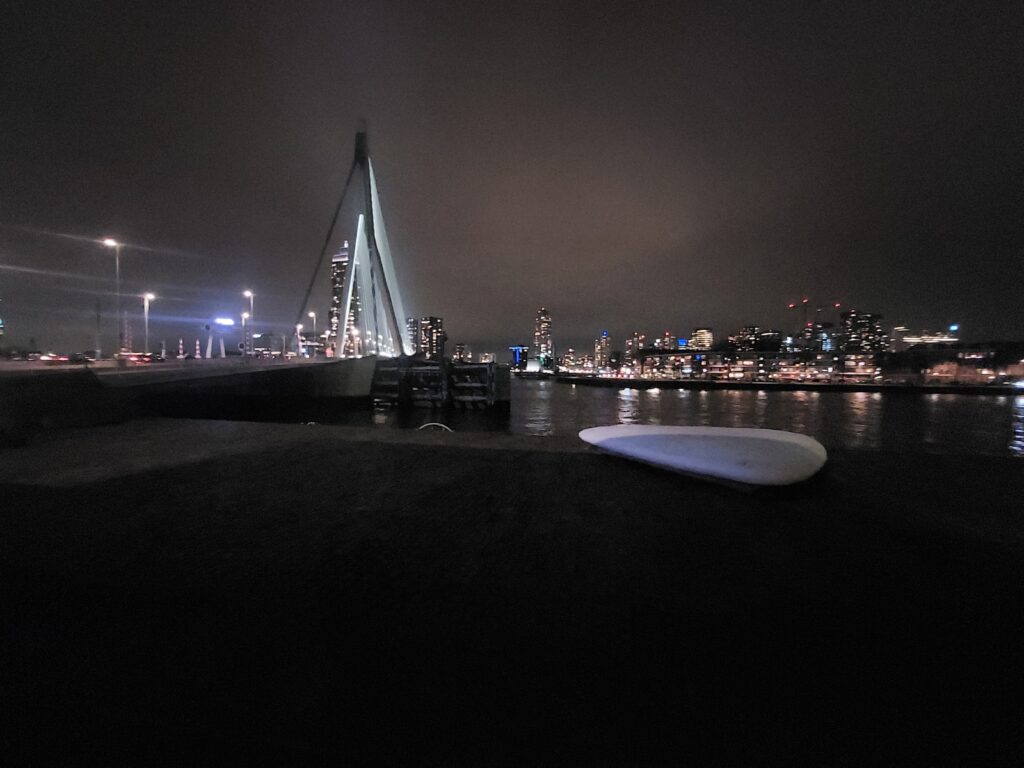


Day 1 (2023-12-15)
As I had an early start on the previous day, I slept till 10 to recover the missing sleep. I went straight to Scheveningen North Beach immediately after check out, using metro line E to The Hague and trams afterwards.

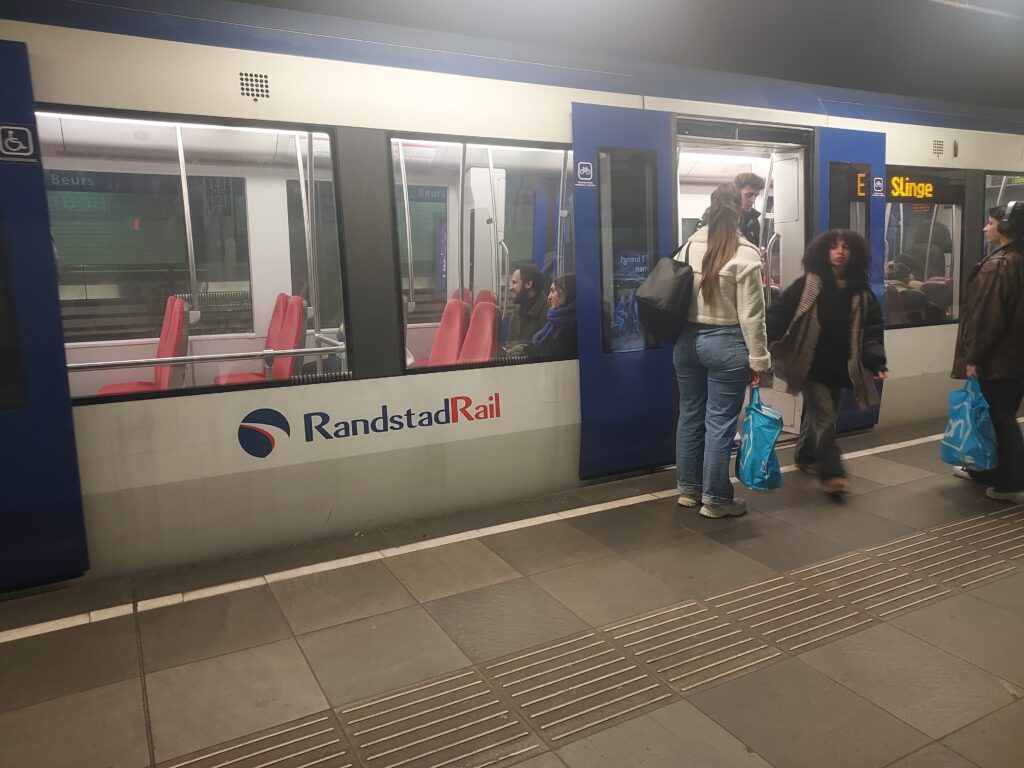
Metro line E is one of the lines branded RandstadRail, the other branded lines are tram lines 3, 4 and 34. These lines share a section of track of a former railway line near The Hague with a few shared stations. All the shared stations have platforms divided into a high part for the high-floor metro trains and a low part for the low-floor tram-trains.
I arrived at the beach at 12:30. There were a few surfers. After walking for a while I also saw a few people in a swimsuit who went in for a dip. I also went in, just for a dip as well because my race was on the day afterwards therefore I wasn’t going to do any swim training. I stayed in the water for 15 minutes and got out. The sea temperature was about 9°C.
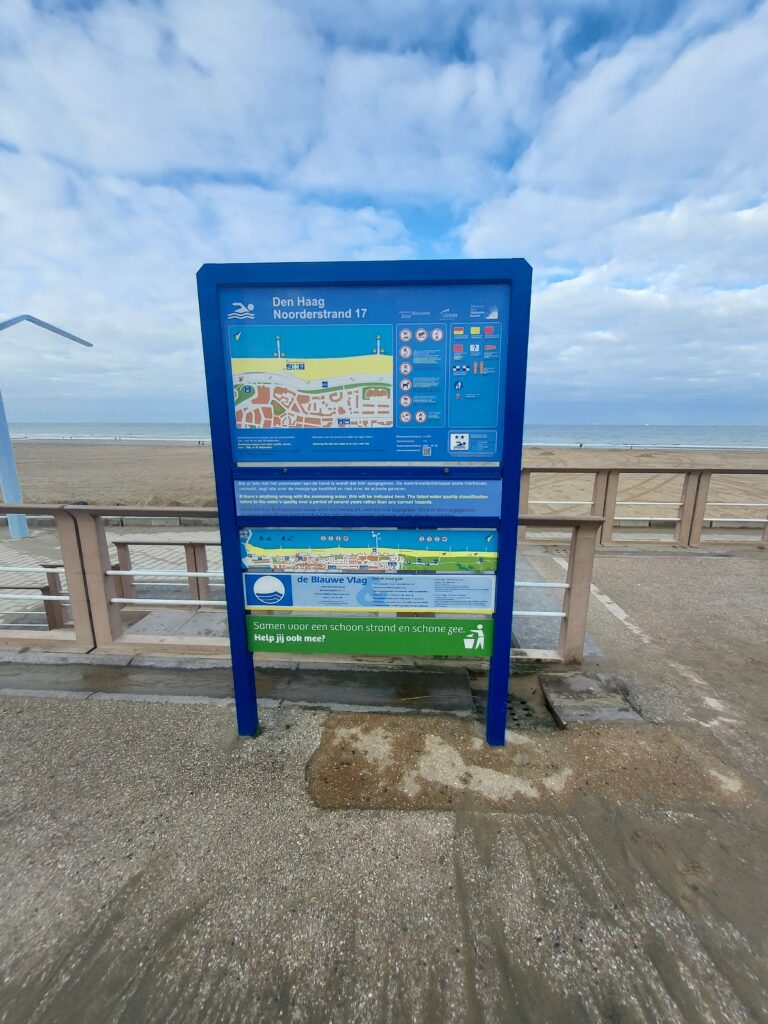
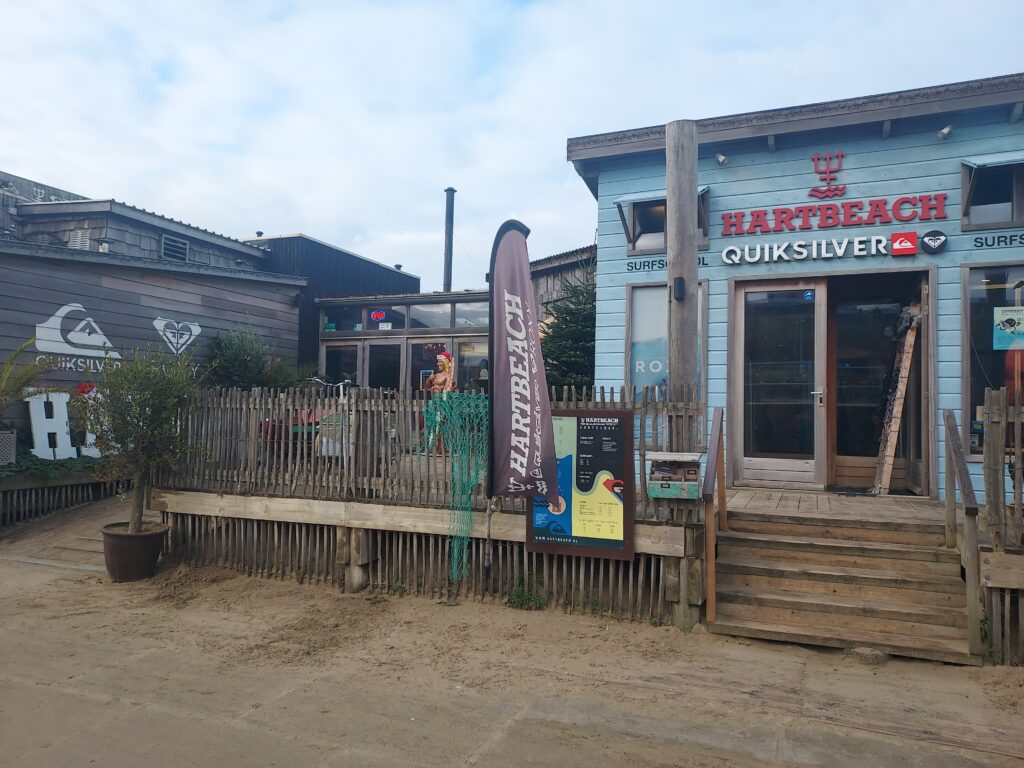
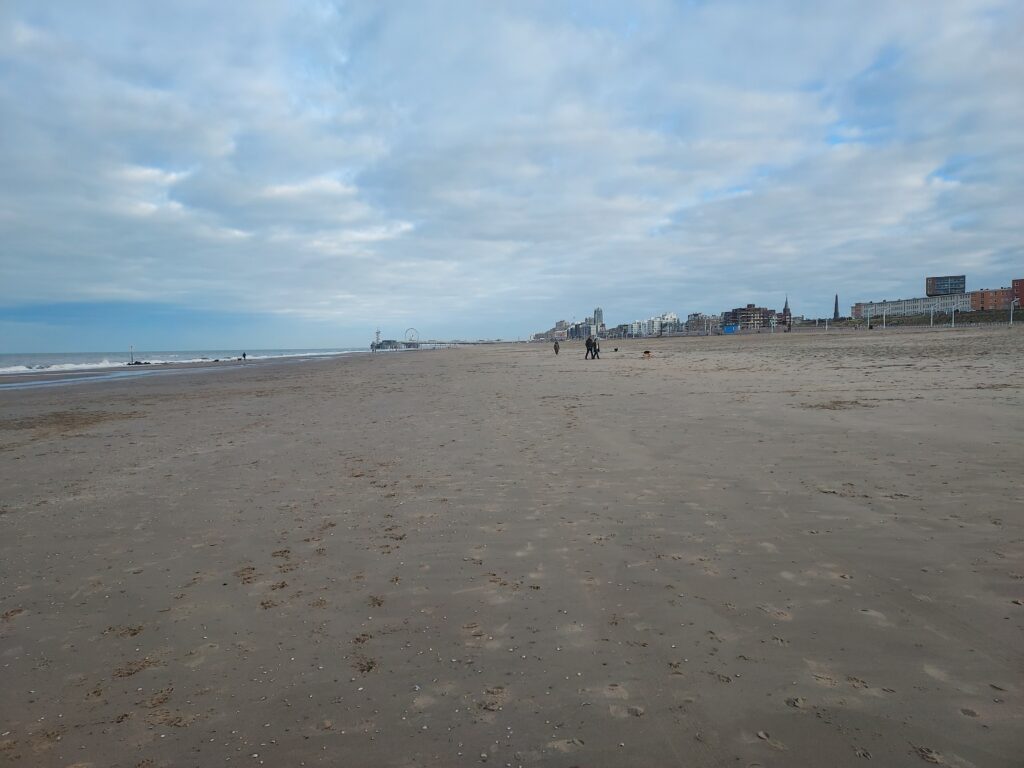
Afterwards, I went back to The Hague to visit the Prison Gate Museum. It is in a building which was a court and a prison in the past, and forms of punishment are exhibited there.
I had dinner in the city and went back to the hostel I booked in The Hague.
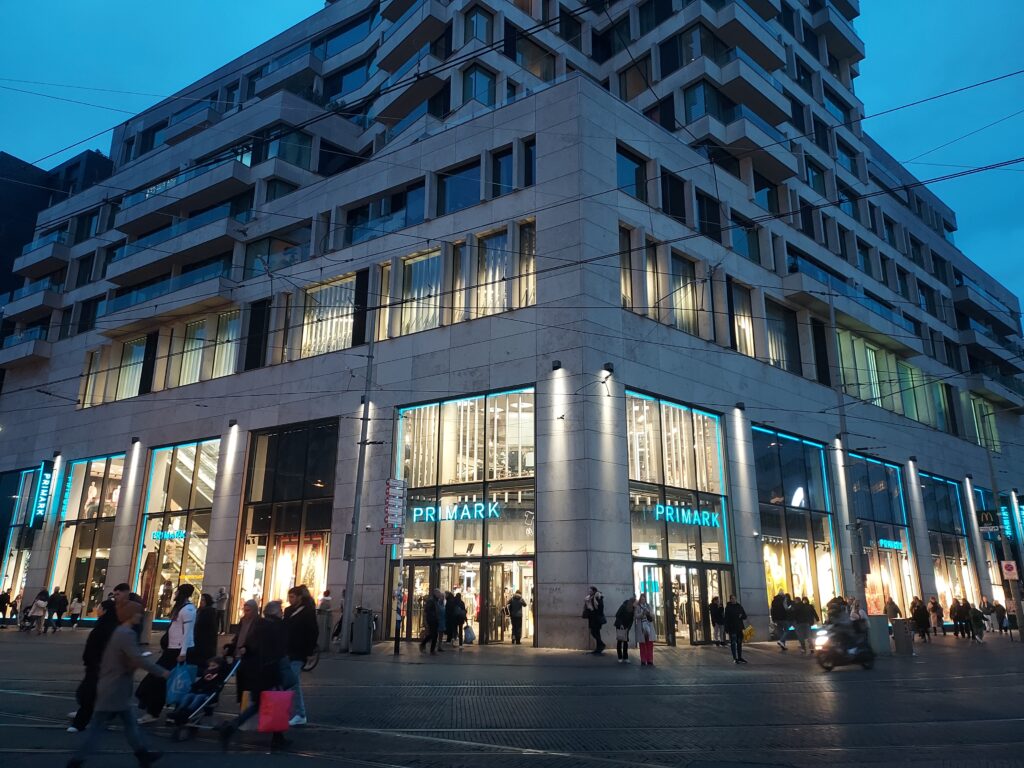

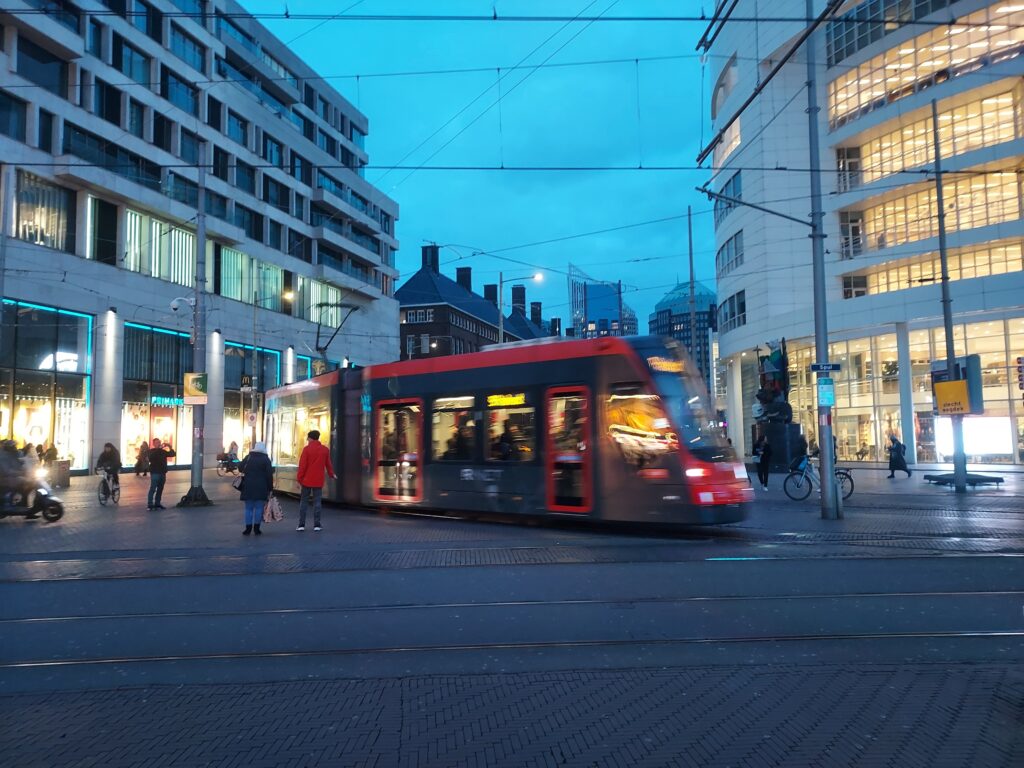
Day 2 (2023-12-16)
The journey to Amsterdam
It was the race day of 1000 m, 250 m and 4 x 250 m events. The race was held at Youthland Outdoor Playground near Amsterdam Science Park. There is a train station at Amsterdam Science Park, however, engineering work was taking place which closed the line through it, with local bus route 40 designated as the replacement bus connecting Amsterdam Muiderpoort and Amsterdam Amstel stations.
I travelled there directly from The Hague. I took an Intercity train which headed for Amsterdam Central, and changed at Leiden Central for another Intercity train for Groningen which passed through Amsterdam South, where I alighted for metro route 51 to Amstel Station.
Each metro and tram route in Amsterdam has a symbol in addition to the number, and the symbol for route 51 is an orienteering flag.
The 250 m race
Unfortunately, after a week of warm weather, the water temperature on that day was 6.1°C, meaning that it wouldn’t count as an official ice swim.
This was my first winter swimming race. The pool was made from an enclosure of a lake and was 25 m long – the standard distance of a winter swimming pool, therefore the race was 10 lengths of the pool.
Unlike regular indoor swimming races, diving and flip turns are not allowed in winter swimming, and the start procedure is:
- Take off your clothes
- Get into the water
- On your marks
- Start
However, as the pool was made in a lake, rather than a real artificial swimming pool, there were no black lines at the lane bottom which was something I wasn’t used to, as my winter swim trainings were all in a real swimming pool (Parliament Hill Lido). Without the black line it was hard for me to keep straight without hitting the lane line, and to prepare for the turns. Only after a few lengths I started to settle at about 28 strokes per length (compared to 24 strokes per length for an indoor 1500 m short course race).
My result in the 250 m race was 4:23.05, placed at 12th out of 21 male finishers.
I met Catherine Pendleton (The Merthyr Mermaid) that day. She did the 1000 m race earlier and she took some photos and videos of my race.
IJburg
After the race, I planned to go to IJburg to have a look of Strandeiland. It was just a 5 km journey by bike using cycle highways on the direct route via Nesciobrug, but it was a hassle as there isn’t a bike hire system easily accessible for tourists in Amsterdam, and the route is motor-free so without a bike the only way to go there is to walk until IJburg.
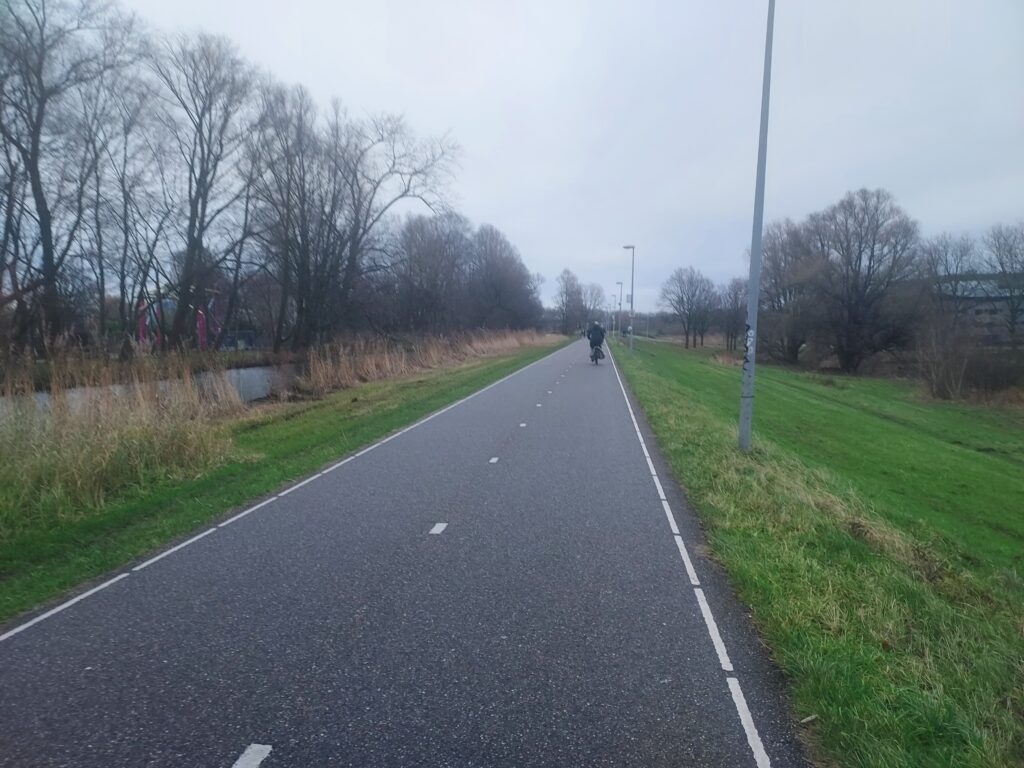
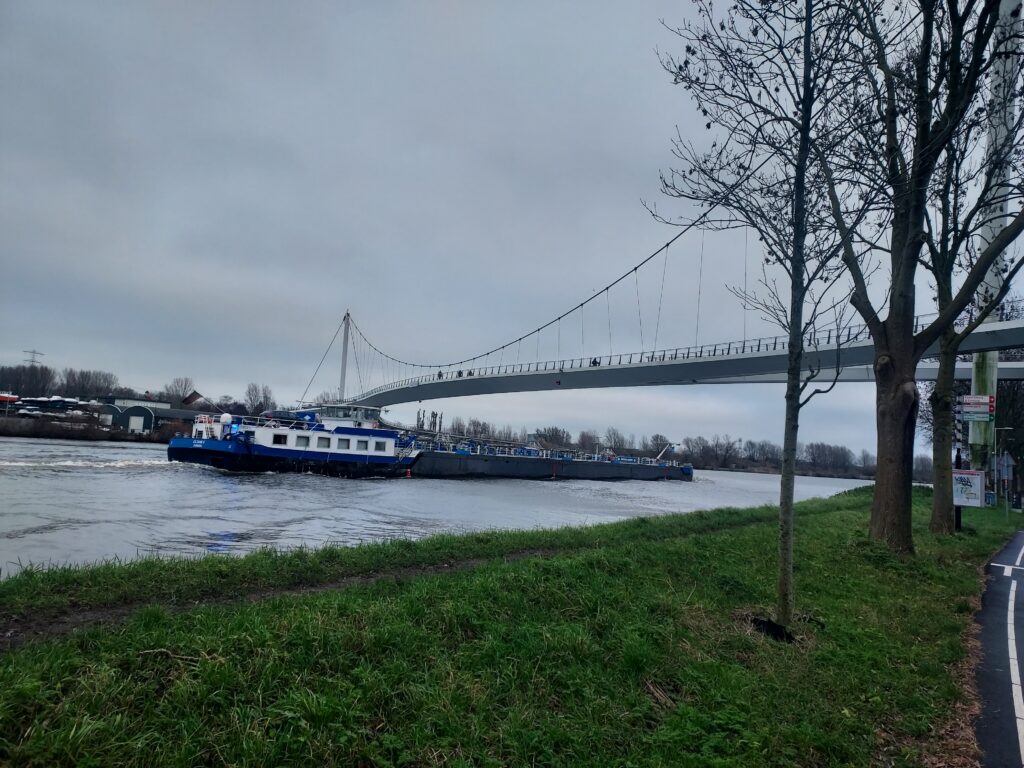
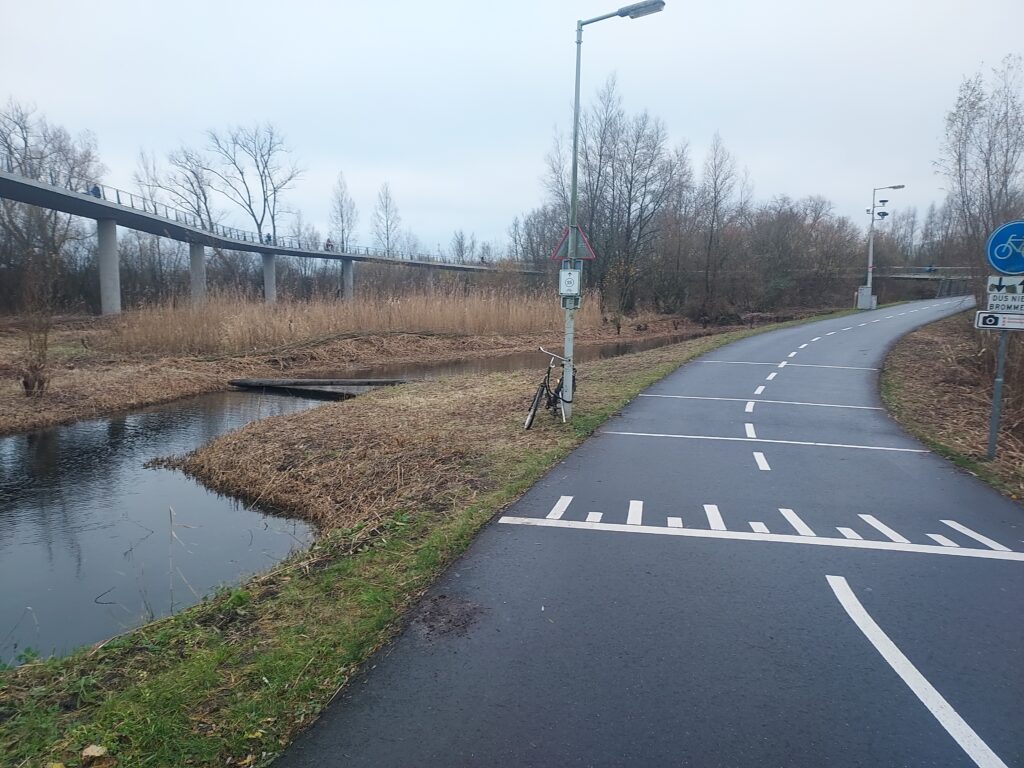
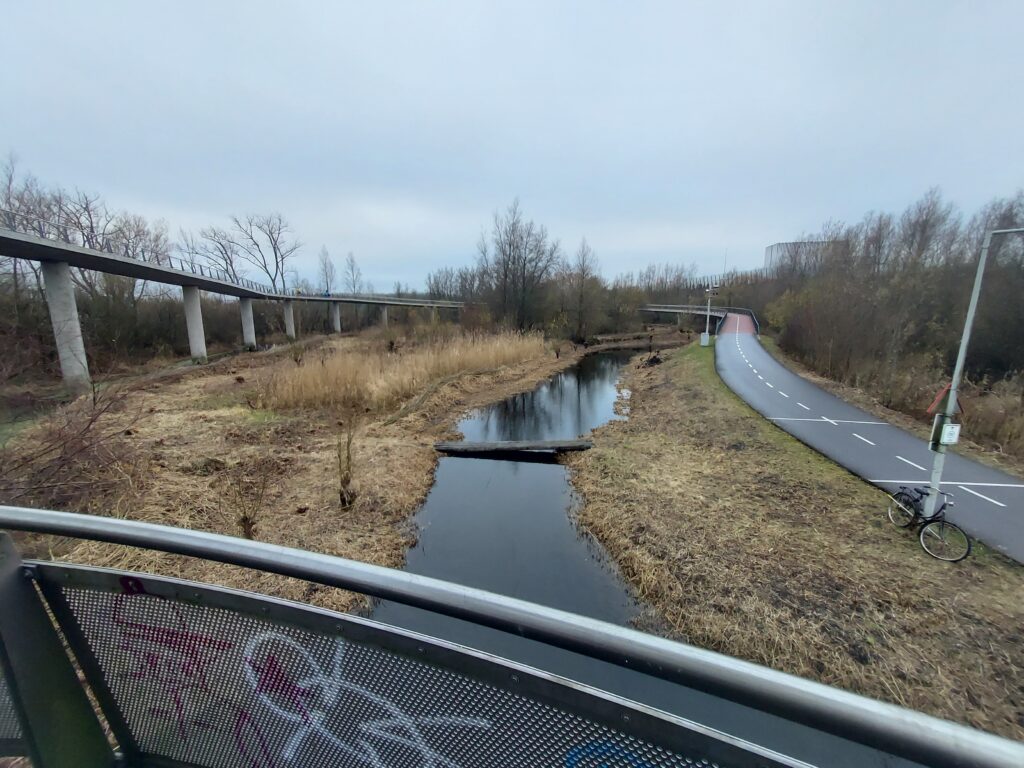

There is a beach on the coast of Strandeiland, an artifical island which is part of IJburg. At the beach there are two roped off areas in the water, at water depths 80 cm and 140 cm. However, they are extremely small with the rope just a few metres from the water edge.
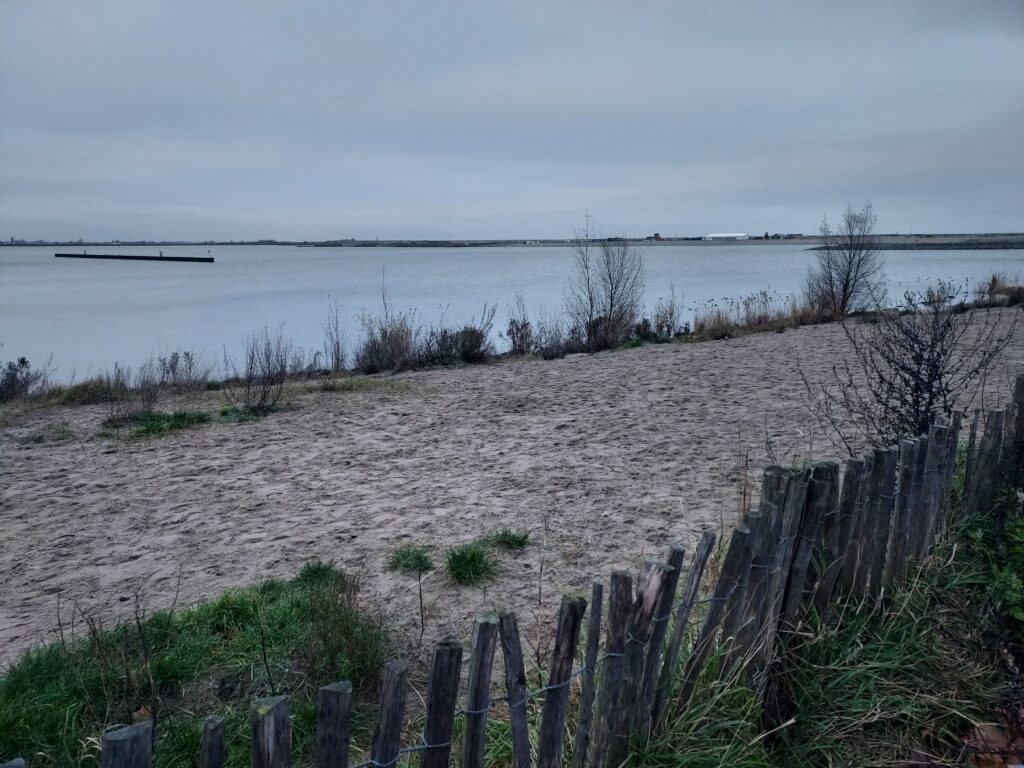

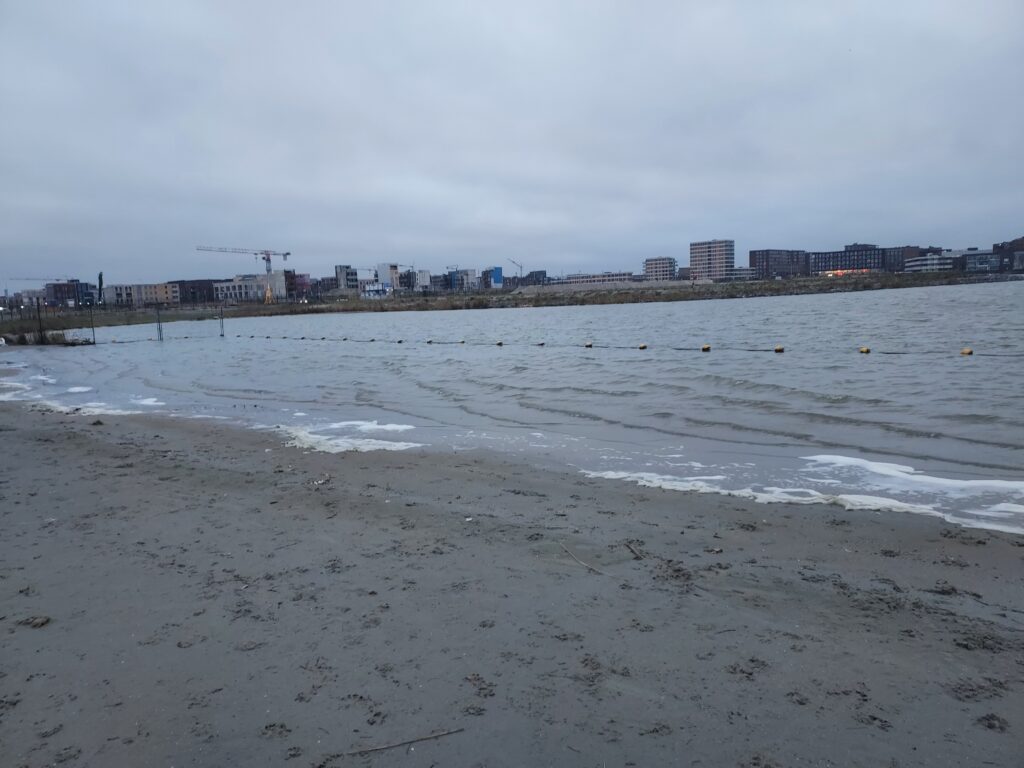
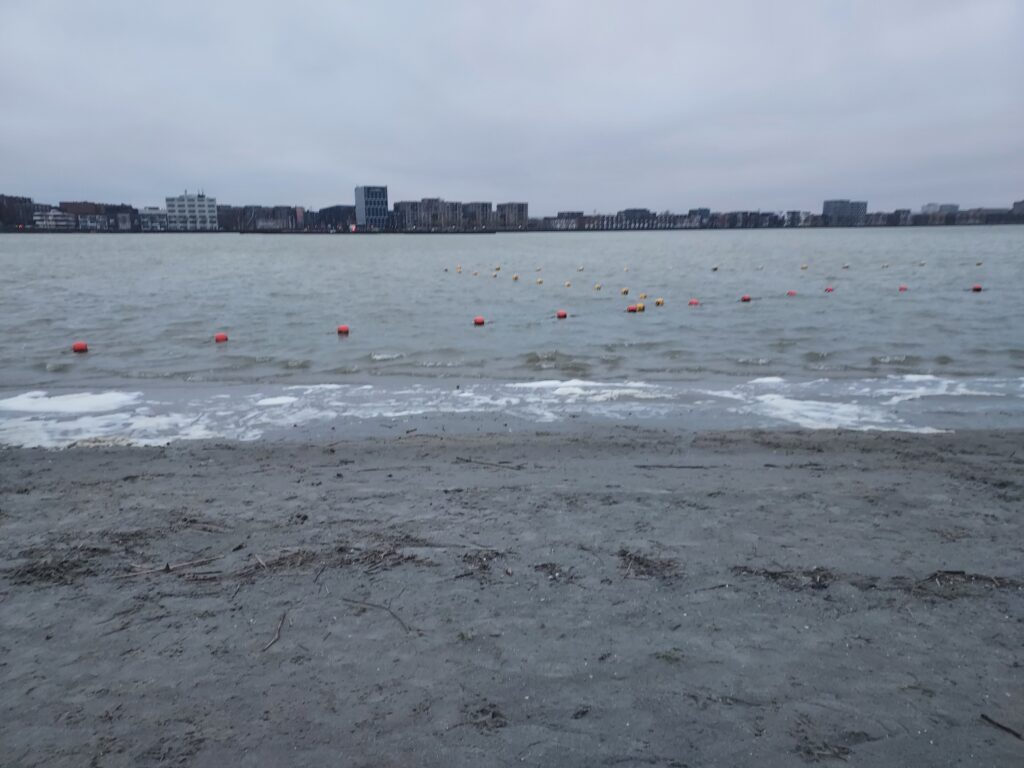

Afterwards, I had dinner in IJburg and took the IJtram back to the city, and visited the Red Light District, before returning to the accommodation near Amstel station. The IJtram, route 26 of the GVB network, is a mostly self-contained light rail line between IJburg and Amsterdam Central station acting as the primary public transport corridor for IJburg, with the only other route serving IJburg (bus route 66) using the other bridge for the island.
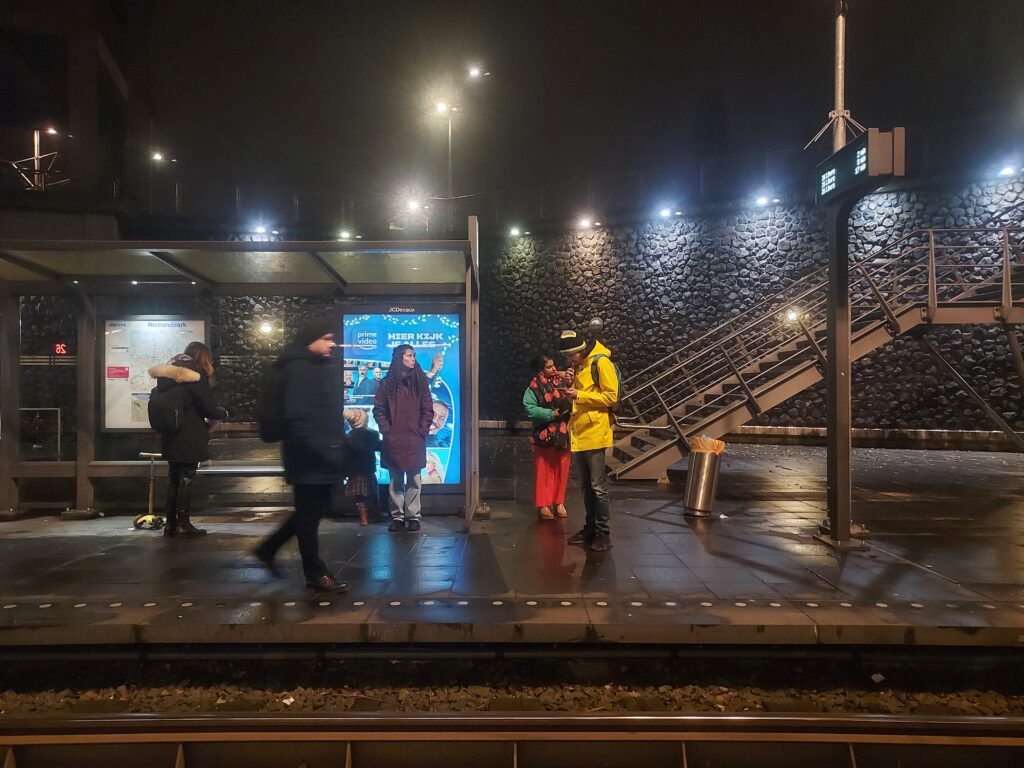
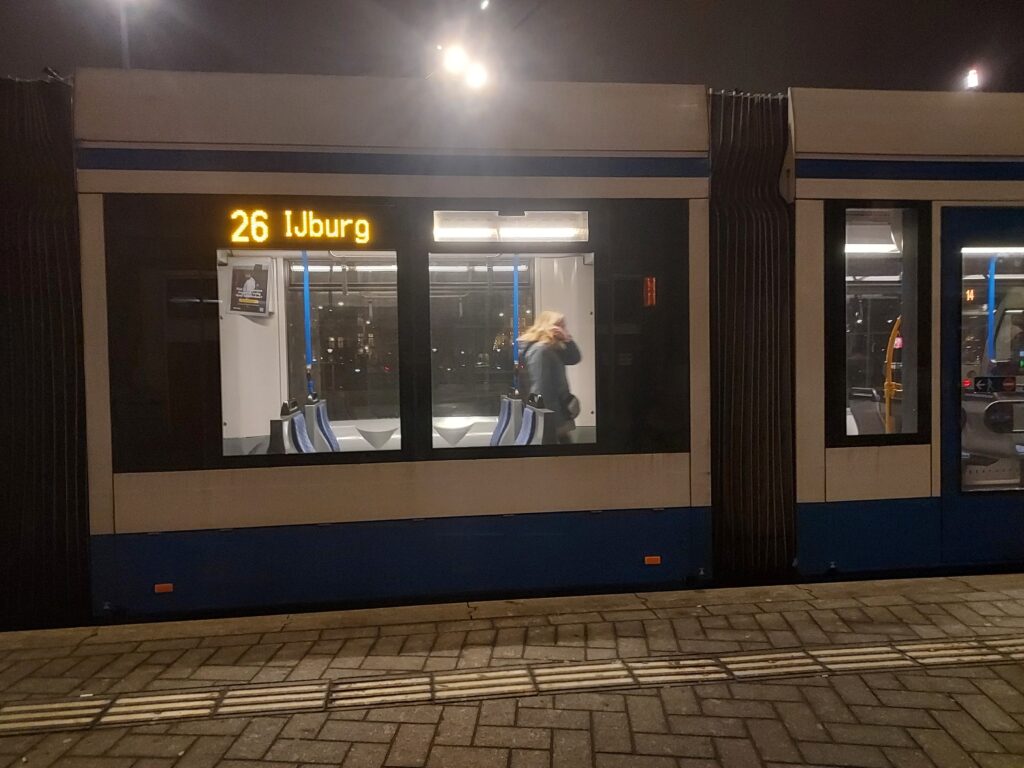
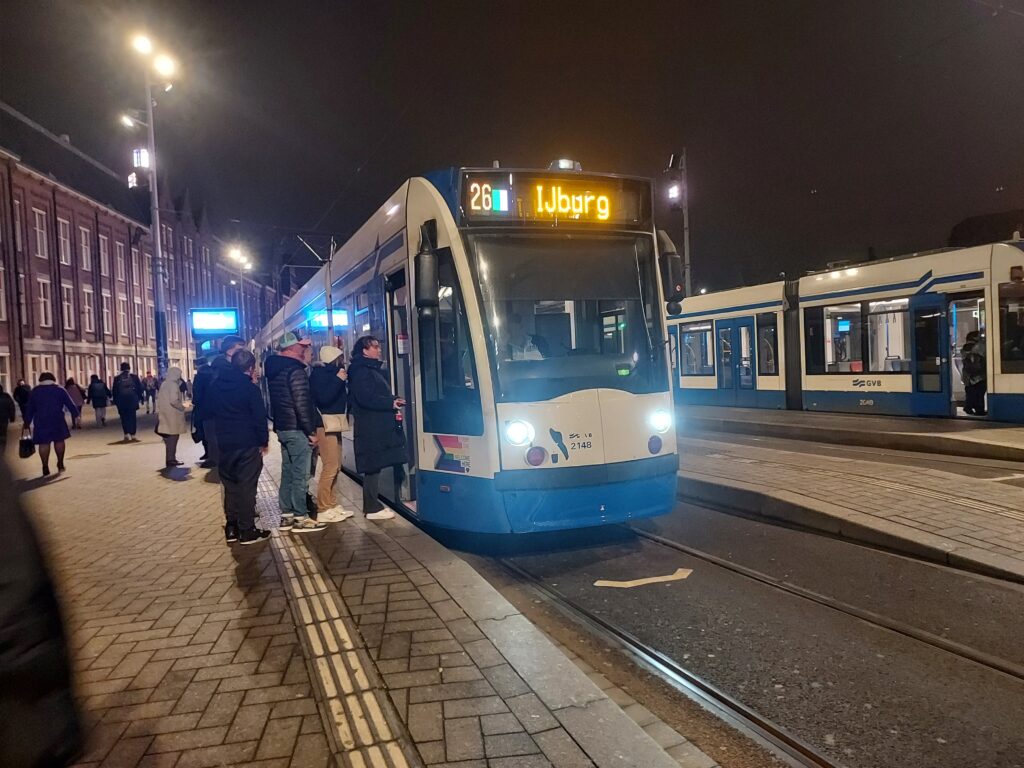
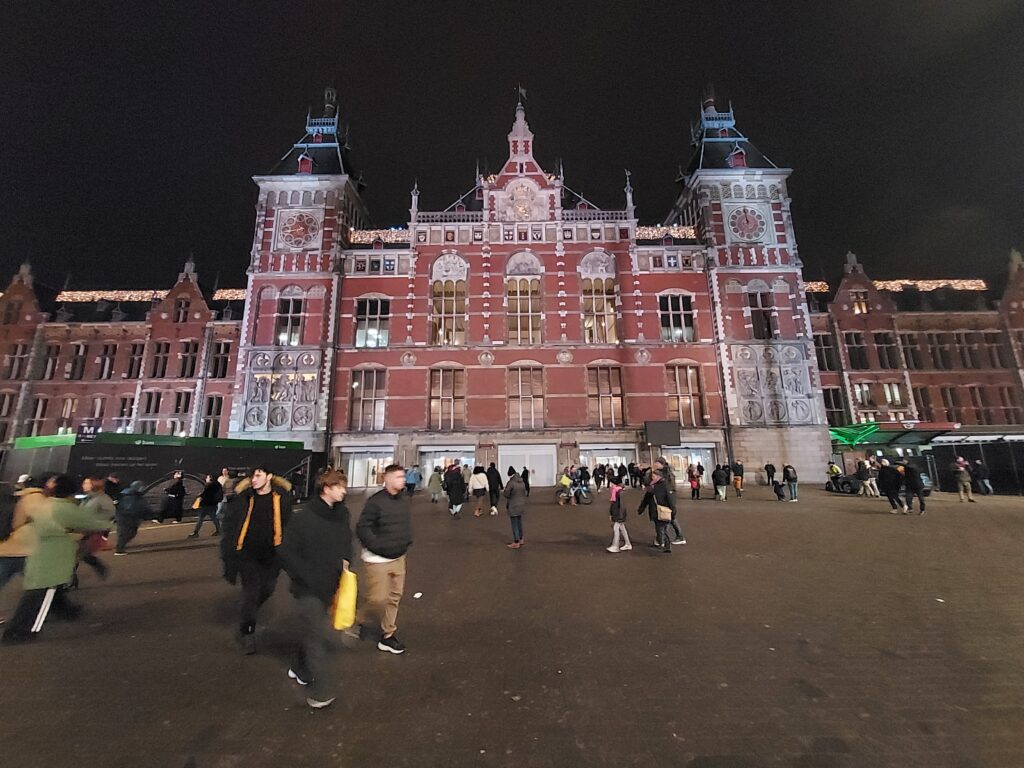

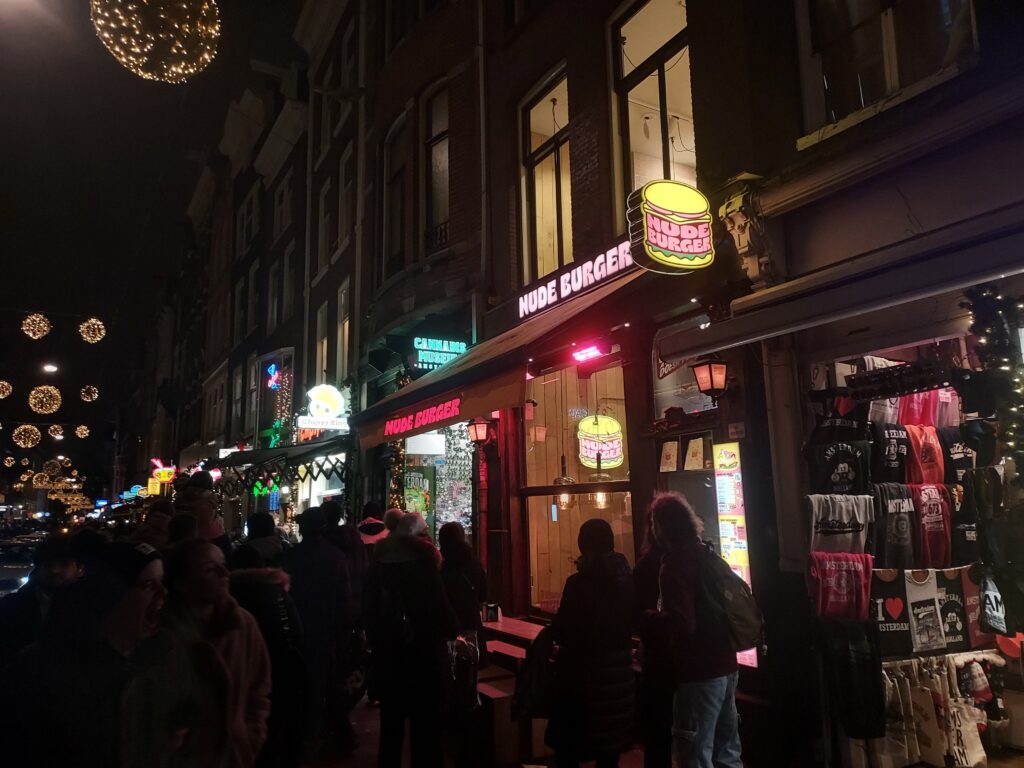
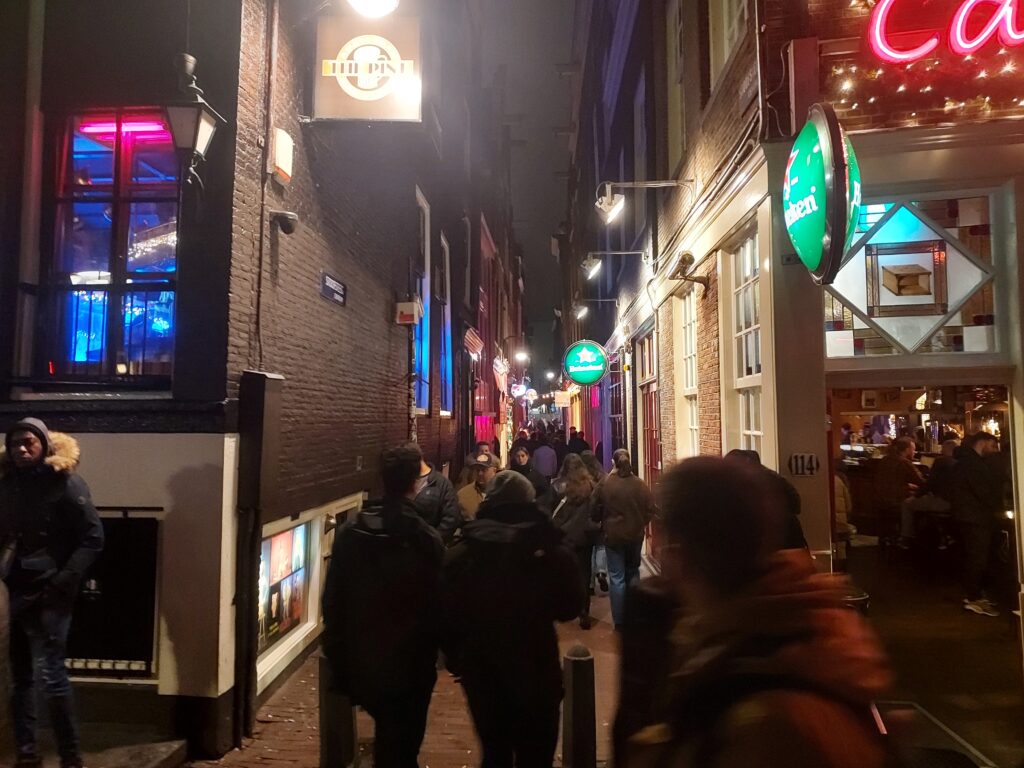
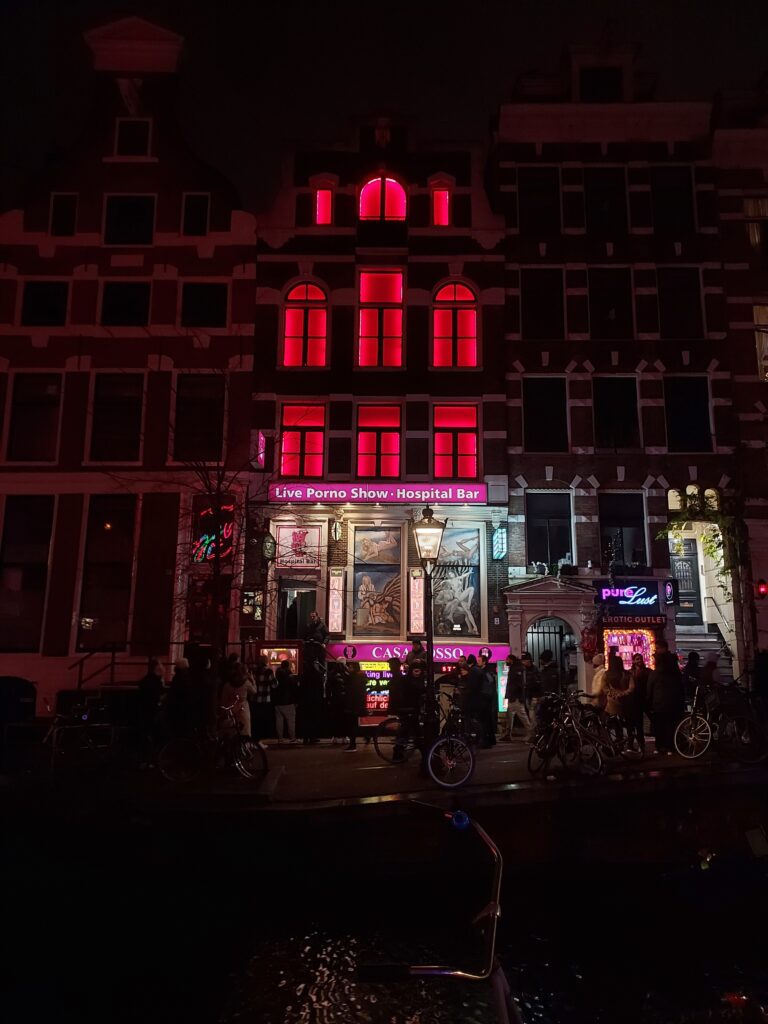
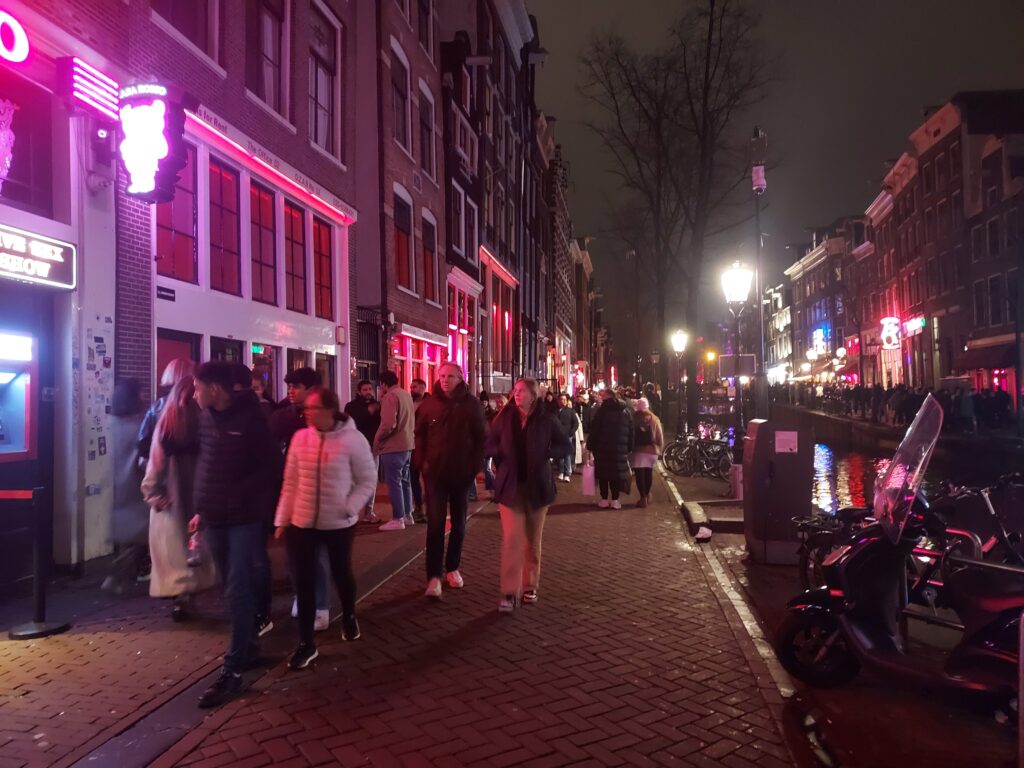
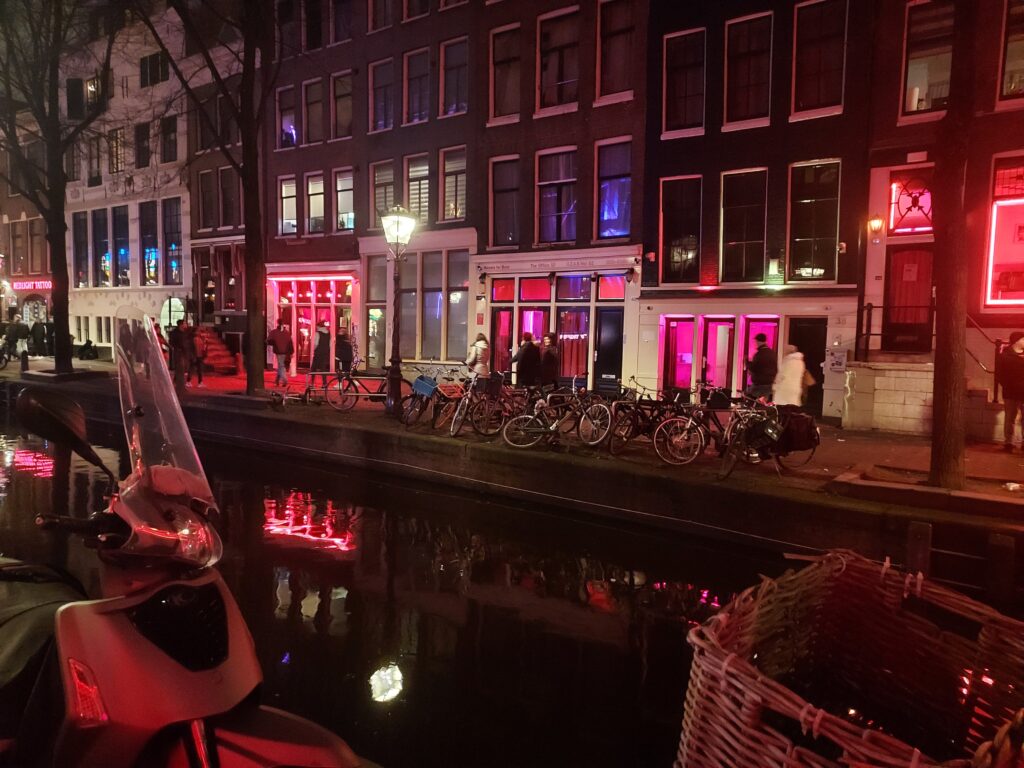
Day 3 (2023-12-17)
It was the race day of 100 m, 500 m, 50 m and 4 x 50 m events. I took the bus 40 again to the race venue and did the 100 m race, and my result was 1:40.99, ranked 21st out of 25 finishers. I also met Cecilia Haz from my swimming club, who went there to do the 500 m race as well.
The race was in the morning, I went to Marineterrein afterwards. There is an unofficial swimming area separated from the port with a floating walkway, and a sauna next to it. The information board showed there are lane lines but I didn’t see any in the water. I saw a few swimmers there. It was tempting but I was not going to get cold again after racing in the morning. However, I did put a thermometer into the water and it read 7.0°C.
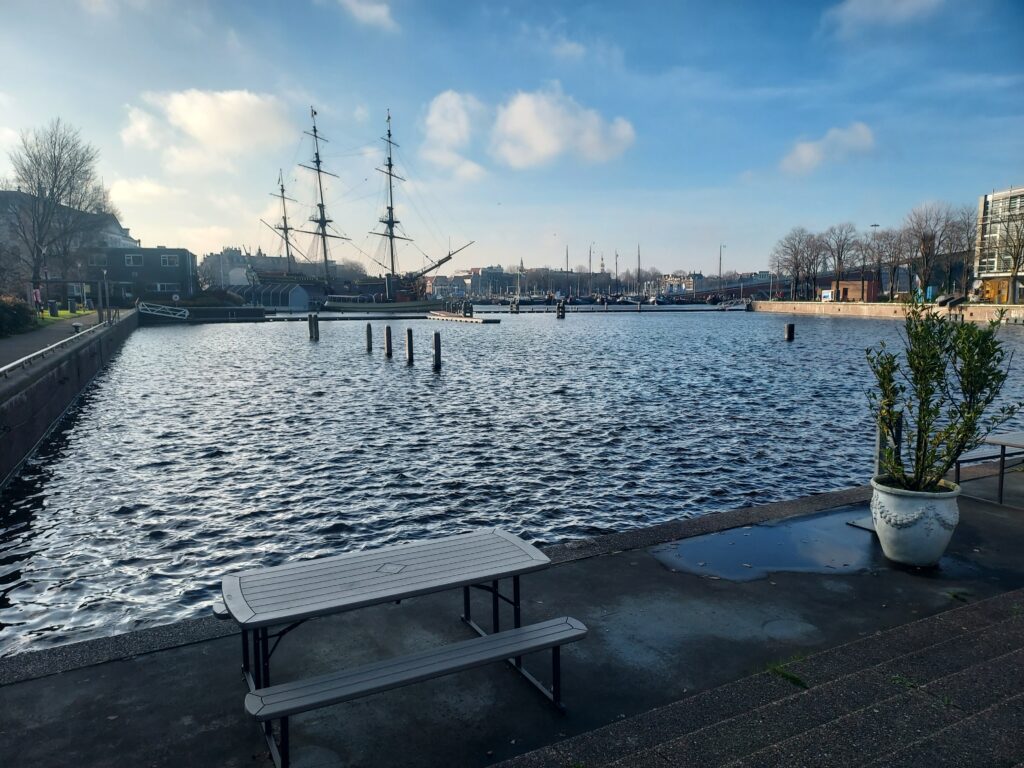
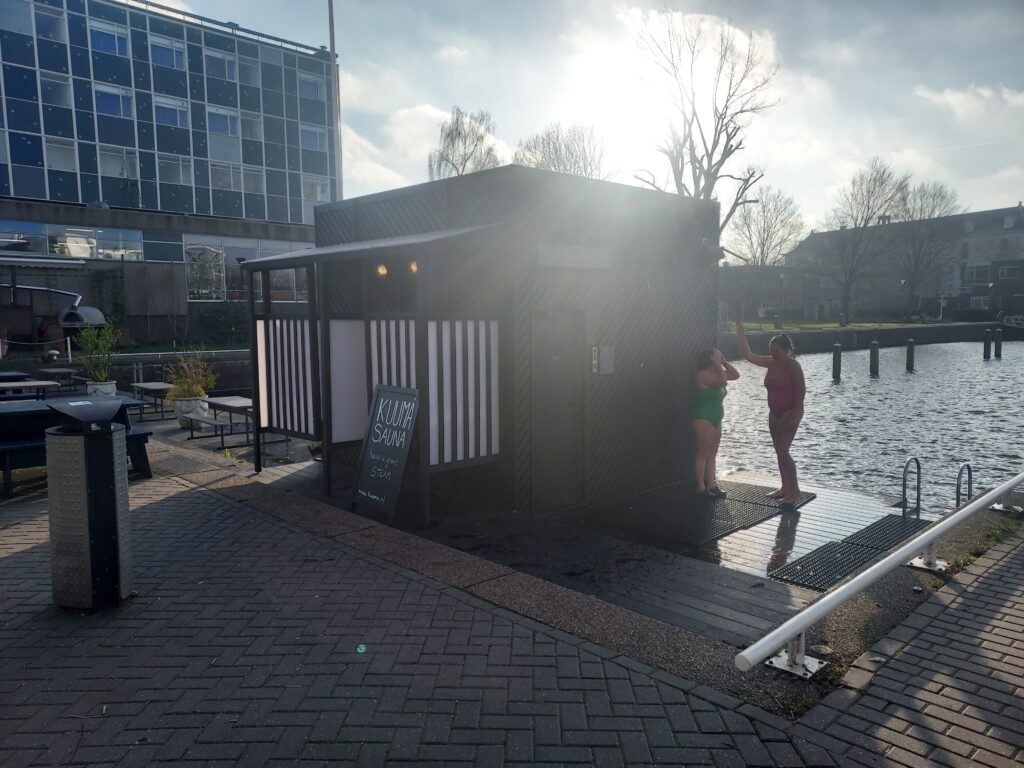
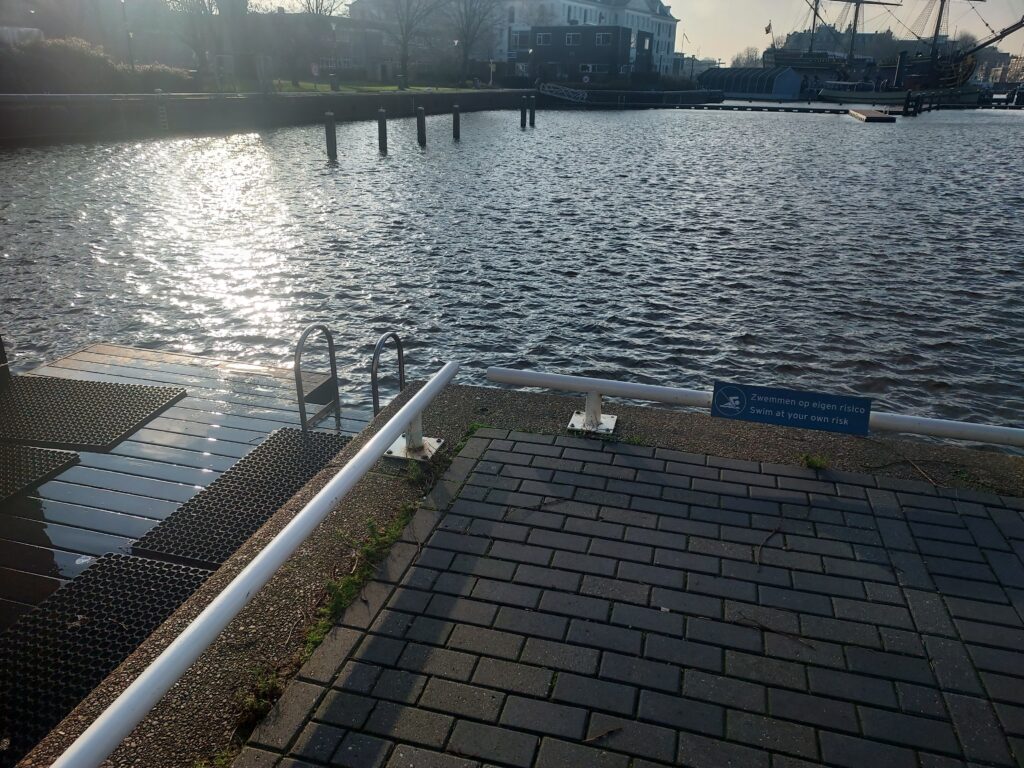
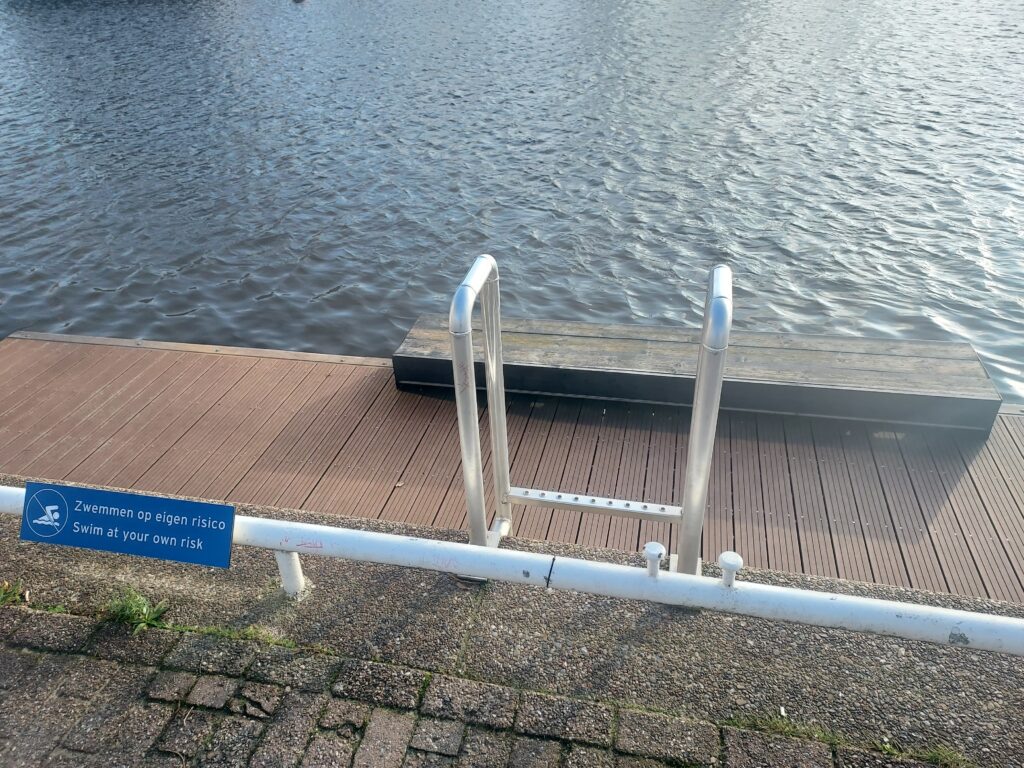



I visited the National Maritime Museum. The most interesting thing in the museum was an exhibition on the food supply chain.
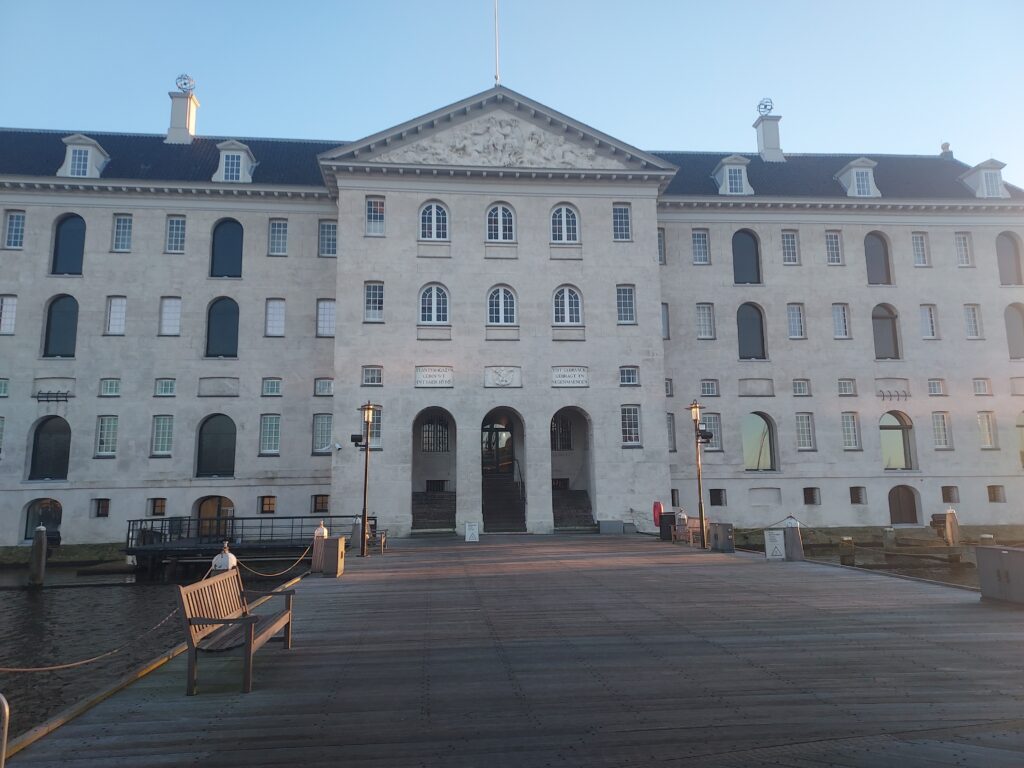
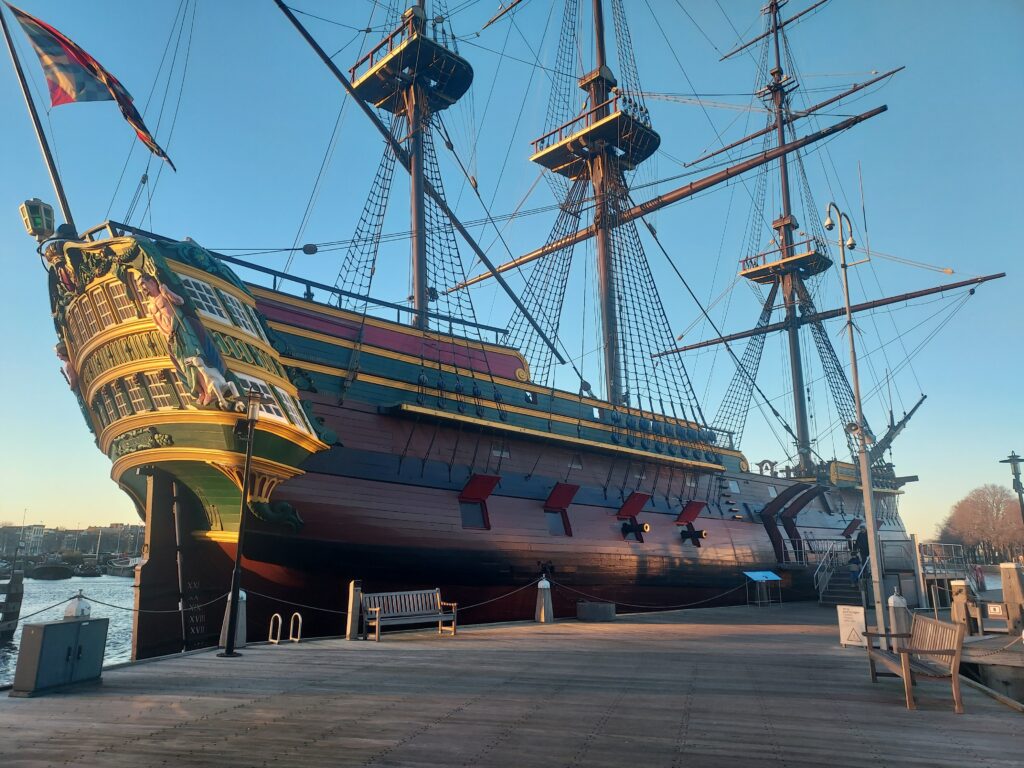
After visiting the museum, there was still about an hour left before I was due to return. I also hoped to visit North Amsterdam and have a look at a few stations of the metro North-South Line, but I decided it wouldn’t be worth it without having enough time to walk around North Amsterdam, so I took the Intercity Direct train from Amsterdam Central back to Rotterdam Central, where I booked my Eurostar journey home.
The Intercity Direct train is a premium service (requiring a supplement) which uses the high speed line between Schiphol Airport and Rotterdam which is built to 300 km/h, but in reality, it was a disappointing journey where regular old Intercity stock, capable for only 160 km/h running, was used for the service.
After arriving Rotterdam I bought some food for dinner, then checked in for the Eurostar home. The Eurostar terminal in Rotterdam is very small which only has the capacity of 160 passengers, and only when a train comes the platform is fenced off for UK-bound passengers.
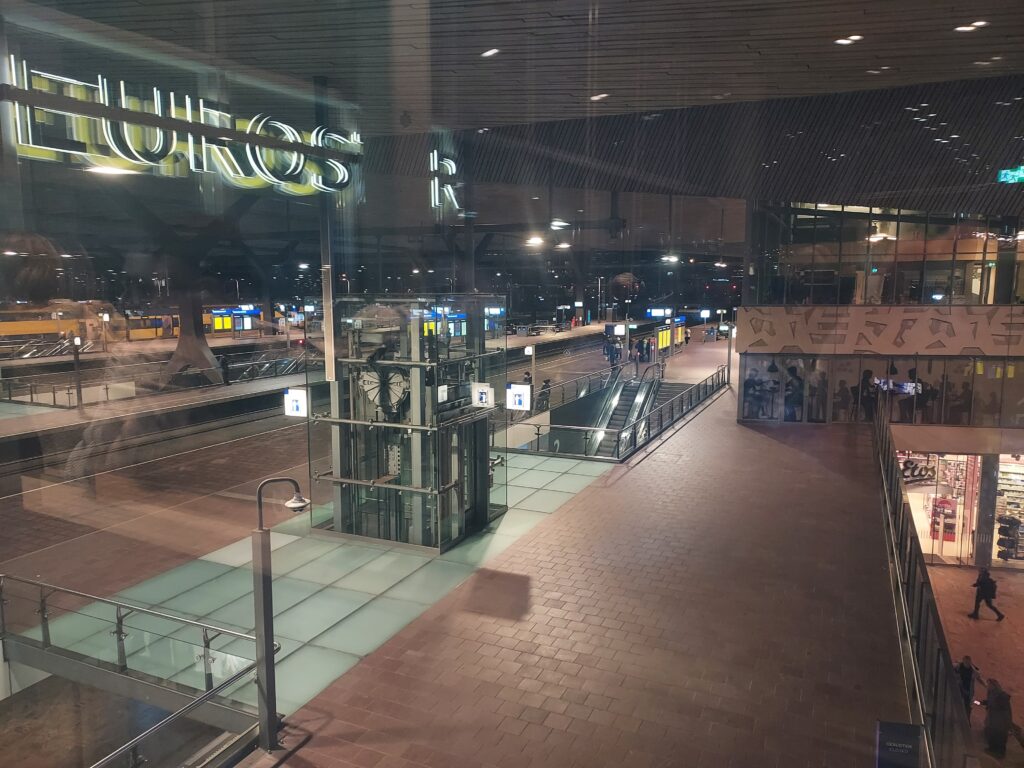
As passengers for London are pre-cleared for entry to the UK before departure without further checks in the UK, separate carriages are used for those going to London, and those alighting before Lille. After alighting the train at London St Pancras International, I had to go through customs only before leaving the paid area. I then returned home to end my trip.
About €540 was burnt in this 4-day trip. Train travel in Netherlands is not cheap and I spent nearly €90 for just 4 days in local transport (i.e. not counting the Eurostar), and another €50 was spent in visiting museums. The 3 nights of accommodation cost me about €110, with high tourist taxes in The Hague and Amsterdam (but less than a € in Rotterdam). As I wanted to have good food, I spent another €150 in eating out as well, and the remainder were the Eurostar ticket, race fee and travel insurance.